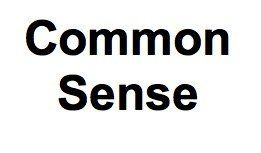Why We Need an Environmental Rights Amendment in Maryland

Marsh at Crapo in Dorchester Co. Photo: Jan Plotczyk
I am an environmental outdoor education teacher in Kent County, Md. My teaching focuses on the human effort to live compatibly with nature’s design so that the world remains sustainable, healthy, and just for all of life, today and in the future.
Over the course of eons, our planet has gone from a burning cauldron to cold rock, to weathered soil, to oceans, to bacteria, to finally life as we know it today. The sun and geologic forces interacting with the elements — air, water, soil, and even fire — make life not only possible and sustainable, but regenerative.
Knowing and preserving nature’s ways are the beginning of caring for nature and for each other. As peace advocate and longtime Saturday Review editor Norman Cousins wrote, “Knowledge is the solvent for danger.” And the knowledge we need now is that the sun shines on everything the same, the rain falls on the rich and the poor equally, and the wind blows through Black and White neighborhoods alike. The viruses that evolve over time do not recognize skin color or political points of view.
Harriet Tubman of Underground Railroad fame, a fugitive from the law who was denied citizenship because of the color of her skin, still believed in the grace of the nature of things. She believed in the equal right of all people to the full expression of their human dignity, which cannot be realized in a degraded environment. As a nation, we still “hold these truths to be self-evident that all men are created equal. That they are endowed by their creator with certain unalienable rights, that among these are life, liberty and the pursuit of happiness.”
And those inalienable rights, particularly to life itself, cannot be realized in an environment that poisons us — some of us more than others. Simply put, the human right to a reasonably benign environment needs to be constitutionally protected, at least at the state level, if not federally.
At the moment, according to environmental rights advocates, only four states have “green amendments” in their constitutions that are strong enough to effectively limit industrial pollution: Hawaii, Montana, Pennsylvania, and, as of last year, New York.
We need the same in Maryland, and, with the Maryland Campaign for Environmental Human Rights leading the charge, we’ve been trying to make that happen since 2019.
Adding an amendment to Maryland’s constitution requires a three-fifths vote in the legislature and then a simple majority vote in a statewide referendum. But for three straight sessions of the General Assembly, bills to draft an environmental rights amendment and to authorize a referendum have failed to even make it out of committee.
Del. Wanika B. Fisher, a Democrat who represents Maryland’s District 47B in Prince George’s County, has introduced a green amendment bill yet again for the 2022 session. Will the fourth time be a charm? Perhaps, but we don’t have to leave it to luck; we can reach out to our state senators and delegates and let them know we consider a clean, livable environment to be a basic human right.
That means drinking water that is free of lead and “forever chemicals.” It means not having to live next to a Superfund site. It means car windows — and lungs — that are not coated with coal dust from a nearby electric power plant. No mercury in fish. No breathing in or consuming microplastics. No climate change.
The list is long. Even daunting. But we are all here together. What affects one neighborhood will affect all neighborhoods.
Ignorance and indifference can no longer be an excuse. We humans are part and parcel of nature, yet we have ourselves become a global pollutant, creating cauldrons of chaos and despair.
This is especially obvious and troubling to the young, who fear for their future and feel betrayed by their leaders. Our behavior is fragmenting the glorious symmetry of nature’s regenerative system. But we can do something to fix it. We can make it a matter of constitutional law that individuals and companies and governments may not poison the environment and by so doing deprive people of their right to health and life itself.
We must live according to nature’s principles, creating a regenerative world that affords each generation no less than what prior generations enjoyed. And, hopefully, more. We can do this by recommitting ourselves to live within Earth’s planetary boundaries, ensuring that everyone — in this and future generations — has a right to a healthy environment. And we can do that by placing an Environmental Human Rights Amendment in Maryland’s constitution.
It is Harriet Tubman’s version of reaching the pinnacle of symmetry: Justice for all.
To learn about the effort to create an Environmental Human Rights Amendment, visit the website of the Maryland Campaign for Environmental Human Rights.
Wayne Gilchrest is a nature educator and former U.S. congressman who represented Maryland’s 1st District from 1990 to 2008. Since 2010, he has put his energy into the Sassafras Environmental Education Center, which he founded. He lives in Betterton.
This article appeared in the Bay Journal.
Common Sense for the Eastern Shore






